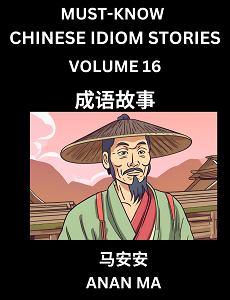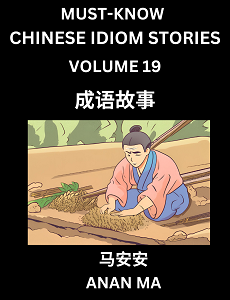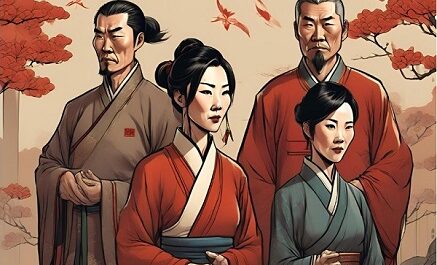Learn Chinese Idiom with Pinyin and English

- Idiom in Chinese-老女归宗。
- Pinyin of Idiom– lǎo nǚ guī zōng.
- Idiom’s Meaning in English– This idiom refers to an old woman returning to her ancestral home or family after many years. It often implies that she has reached a certain age or status and wishes to return to her roots.

Chinese Idiom Stories Books (HSK All Levels):
- Books to Learn Chinese Idiom Stories (Part 1)
- Books to Learn Chinese Idiom Stories (Part 2)
- Books to Learn Chinese Idiom Stories (Part 3)
Learn Chinese Idiom Story in English (成语故事的英文)

In ancient times, there was a woman named Xiao Mei. As a young girl, Xiao Mei was sold to a wealthy family far away from her hometown due to poverty. She was diligent and kind-hearted, but her heart was always filled with longing for her hometown and family. As the years passed, Xiao Mei grew from a youthful girl into a gray-haired old woman. However, her homesickness grew stronger and stronger. Finally, she decided to let go of all her worries and return to her hometown, to the place where her true “home” was—her ancestral home with her blood relatives. After a long journey, Xiao Mei finally returned to her hometown and reunited with her long-lost relatives. This moment filled her with immense happiness and satisfaction, as she had finally fulfilled her lifelong wish—an old woman returning to her ancestral home.
Learn Idiom Story in Chinese (成语故事)

古时候,有一个女子,名叫小梅。小梅年幼时因家境贫寒,被卖到了远方的富贵人家做丫鬟。她勤劳善良,但心中始终思念着故乡的亲人。随着岁月的流逝,小梅从一个青涩的少女变为了白发苍苍的老妇。然而,她的思乡之情却愈发浓烈。终于有一天,她决定放下所有的牵挂,返回故乡,回到她真正的“家”——那个有着她血脉亲人的地方。经过长途跋涉,小梅终于回到了故乡,见到了久违的亲人。这一刻,她感到无比幸福和满足,因为她终于实现了自己多年的愿望——老女归宗。
Learn Keywords with English, Simplified Chinese Characters, and Pinyin (关键词)

小梅(Xiǎo Méi): a female protagonist
丫鬟(yá huán): servant girl
思乡(sī xiāng): homesick
白发苍苍(bái fà cāng cāng): with gray hair, indicating old age
老女归宗(lǎo nǚ guī zōng): an old woman returning to her ancestral home
Pinyin of Idiom Story (故事的拼音)

Gǔ shíhòu, yǒu yīgè nǚzǐ, míng jiào xiǎoméi. Xiǎoméi nián yòu shí yīn jiājìng pínhán, bèi mài dàole yuǎnfāng de fùguì rénjiā zuò yāhuan. Tā qínláo shànliáng, dàn xīnzhōng shǐzhōng sīniànzhe gùxiāng de qīnrén. Suízhe suìyuè de liúshì, xiǎoméi cóng yīgè qīng sè de shàonǚ biàn wèile bái fà cāngcāng de lǎo fù. Rán’ér, tā de sīxiāng zhī qíng què yù fā nóngliè. Zhōngyú yǒu yītiān, tā juédìng fàngxià suǒyǒu de qiānguà, fǎnhuí gùxiāng, huí dào tā zhēnzhèng de “jiā”——nàgè yǒuzhe tā xuèmài qīnrén dì dìfāng. Jīngguò chángtú báshè, xiǎoméi zhōngyú huí dàole gùxiāng, jiàn dàole jiǔwéi de qīnrén. Zhè yīkè, tā gǎndào wúbǐ xìngfú hé mǎnzú, yīnwèi tā zhōngyú shíxiànle zìjǐ duōnián de yuànwàng——lǎonǚ guī zōng.




